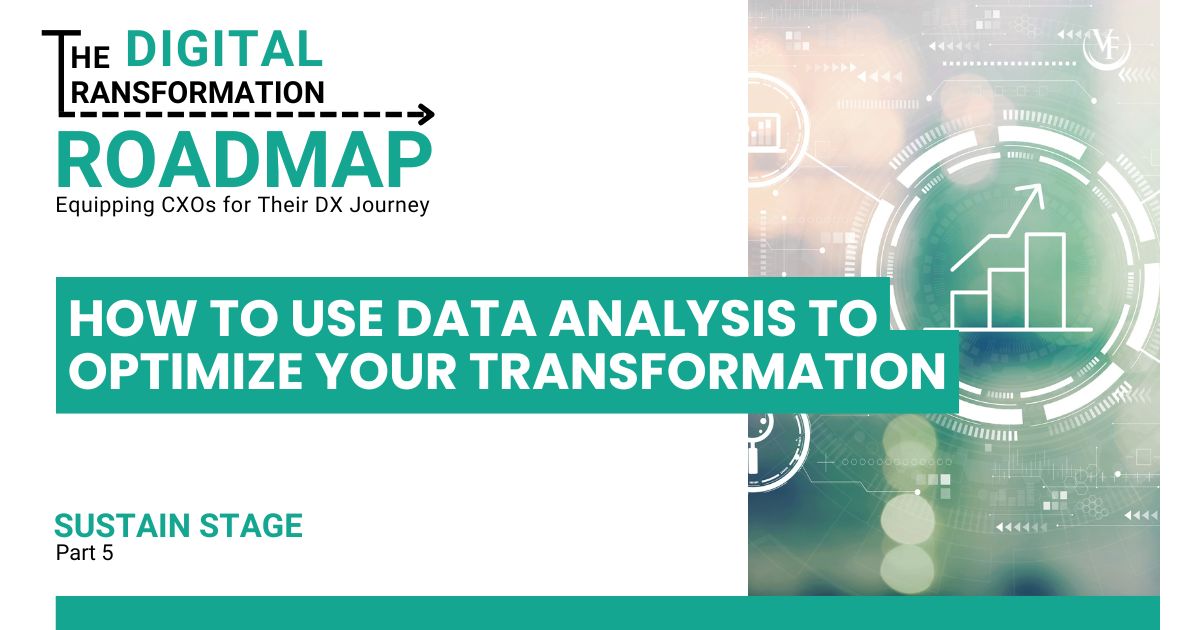
Table of Contents
You’ve defined measurements. You’ve set up monitors. You’re flooded with dashboards and endless data streams since go-live. But ask yourself honestly: what have you actually done with all that data?
For too many organizations, the answer is “not much.” Maybe nothing at all.
That’s not just a missed opportunity. It’s a strategic failure, and it undermines the entire point of digital transformation.
Why Your Transformation Data Is Sitting Idle
It’s a problem we see again and again with CXOs and strategic leaders. After a high-profile digital transformation, the focus shifts elsewhere. Monitors tick away in the background, capturing every transaction, complaint, adjustment, and shipment, but no one is looking closely at what it all means.
Or, worse, performance dips, and teams reach for quick excuses or accept surface-level answers. The value of monitoring collapses and even trust in the system erodes.
Don’t mistake activity for progress: defining measurements and building monitors is only step one. The rest of the transformation begins when you analyze your data, unearth the root causes, and drive meaningful action.
It’s Not About Collecting Data. It’s About Understanding It.
A lot of effort goes into defining measurements, building monitors, and gathering user feedback during a transformation. But unless you’re gleaning real insights from this data, you’re throwing away the best intelligence your business has.

Here’s a practical framework for turning post-transformation data into results that matter:
1. Complete Your One-Time Success Measurements
Some criteria you have defined only need to be measured at critical milestones. For example, a success criterion could’ve been “At go-live, 75% of all processes are documented with Standard Operating Procedures.”
2. Regularly Review Monitored KPIs
Set a discipline for reviewing ongoing success criteria and key metrics—such as percentage of on-time shipments, number of inventory adjustments, or system error rates. Identify where you’re winning, and more importantly, where you’re drifting off-course.
3. Don’t Stop at the Surface
Routinely review comprehensive monitoring data and user feedback. Look for trends and patterns that may signal trouble by asking the following questions:
- Are specific teams reporting more issues than others?
- Are there areas of data that seem to be consistently low in quality?
- Are system errors concentrated in a particular module or area?
This qualitative feedback can be invaluable in identifying the root causes of issues early and providing opportunities for improvement.
4. Adopt Relentless Root Cause Analysis
After analyzing the data and identifying trends that could indicate potential issues or inaccurate measurements, the final step is to perform a root cause analysis to uncover the underlying reasons.
If you settle for the first explanation, you’ll miss other causes which aren’t immediately apparent. Review all your available data together, not in isolation. Be prepared to collect more if conflicting patterns emerge.
The most powerful tool at your disposal? The simple question “Why?” Ask it repeatedly, stripping away layers of assumption, until you get to the heart of the issue.
A real-world example:
A manufacturer expected on-time shipments to hit 95%. Instead, they flatlined at 70%. The easy answer? “The new system is slowing us down.” But that explanation doesn’t hold up under real scrutiny.
Further analysis revealed a spike in purchase orders for expedited shipping. Digging deeper, they discovered procurement had set too many key materials to only a one-day lead time. The system didn’t prompt new inventory orders soon enough, causing delays. The “problem” wasn’t with manufacturing efficiency or even the new system, but a hidden configuration in purchase settings.
Find the root cause, not just the visible symptom, and you will be able to implement more effective solutions.

Transformation is not easy, but it doesn’t have to be impossible. Take control of your project’s success today and schedule a free 30-minute consultation to find out how Victoria Fide can equip you for transformational success.
Benefits of Ongoing Data Analysis
This is where your data investment truly pays off:
- Pinpoint existing pain points early: By constantly monitoring and analyzing your data, you can identify pain points before they escalate into major issues. This allows you to address them promptly, preventing potential disruptions or crises.
- Solve systemic problems, not just superficial symptoms: Dig deeper into the root causes of recurring issues, ensuring lasting solutions instead of short-term fixes.
- Detect and reverse negative trends early: Spot patterns in performance or behavior that could lead to bigger problems, allowing you to take corrective action before they cause harm.
- Move from Reactive to Proactive: Instead of constantly putting out fires, be proactive in identifying potential problems and taking preventive measures.
- Build a culture of continuous improvement: Show the tangible benefits of leveraging data, from improved processes to better decision-making, proving its value company-wide.
Continuous improvement depends on proactive, ongoing analysis—not one-off reviews. Regularly analyzing your data ensures your strategies remain effective, adaptable, and aligned with your goals over time.
Conquer Assumptions to Gain Big-Picture Insights
You might ask, “If I have automated monitoring, why plan for so much extra data analysis?”
The short answer is because monitoring is built on assumptions—assumptions about which data will be most critical and what are the expected leading indicators. However, business evolves, and unexpected performance gaps will always emerge. Regular analysis can help keep your finger on the pulse of your digital transformation.
A dashboard tells you what’s happening. Rigorous analysis tells you why.
Monitors deliver static snapshots; real insight demands broader, deeper, and ongoing analytical work. When you combine specific monitor outputs with data from user feedback, you will be able to see the bigger operational picture. That’s when hidden sources of friction, emerging risks, and new opportunities become visible, even if they’re not captured by your original monitors.
Build Momentum Through Measurement
Setting up monitors is useless if you’re not prepared to utilize the information they will give you. The organizations that thrive after digital transformation are those that get their hands dirty with data and keep asking “why” until the truth emerges.
Here’s what you stand to gain from regular data analysis:
- Clarity on genuine pain points, not distractions or red herrings
- Insight into the true drivers of issues, enabling permanent fixes
- Foresight to spot downward trends before they bite
- Agility to shift from damage control to pre-emptive action
- A Culture of Excellence where continuous improvement is the norm
If you’re ready to move from data collection to data mastery, don’t keep this perspective to yourself. Share this article with your network and subscribe for more hands-on insights to power your next transformation. Say goodbye to valuable data collecting dust in unused dashboards and turn measurement into momentum.

